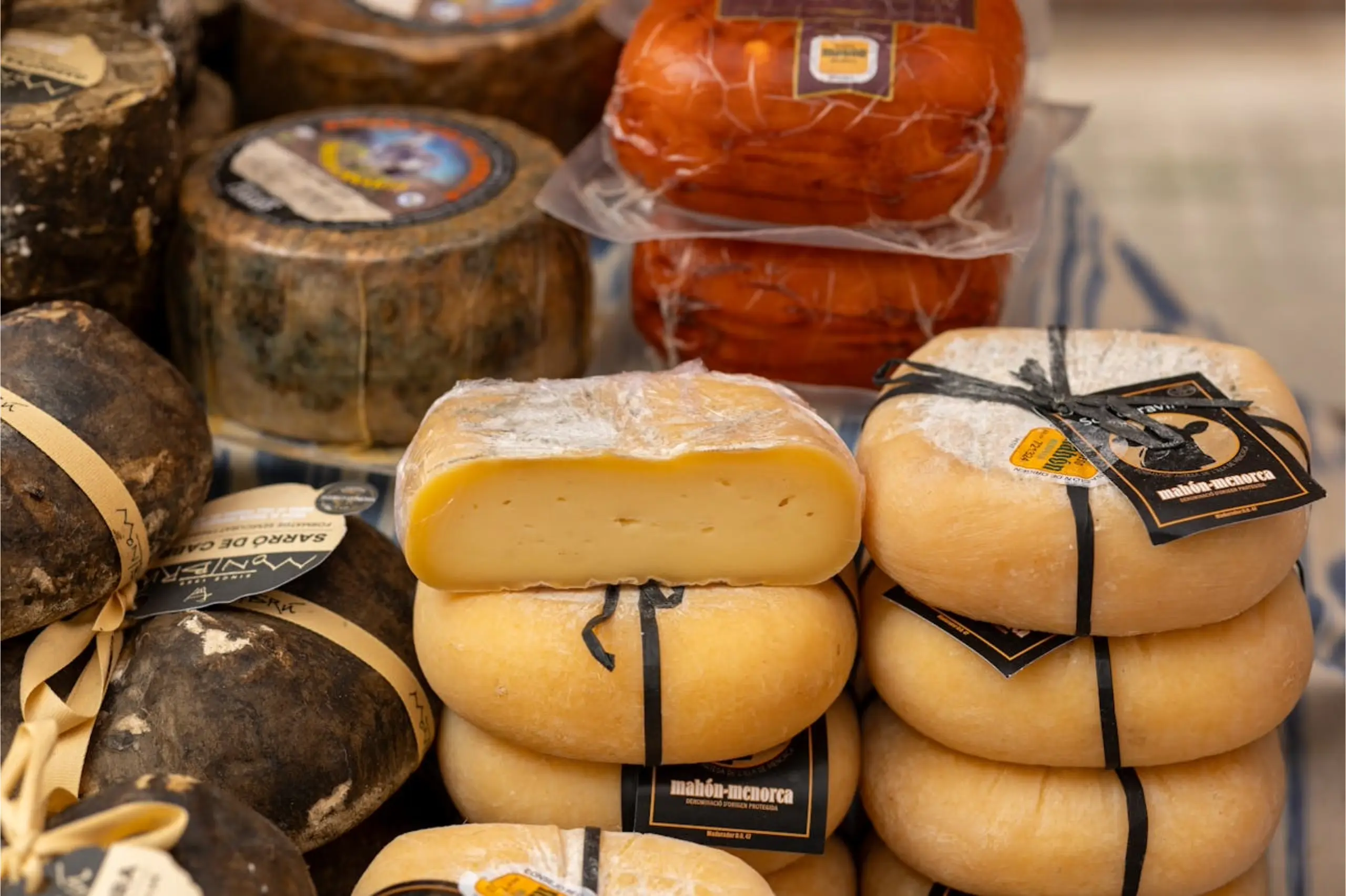IBERIAN HAMS
PDO - Protected Denomination of Origin
Sweet, balanced and with an intense flavour with hints of cooked butter and a roasted and toasted conamon tones. All rounded off with hints of carmelised nuts which are typical of fermented and aged sheep’s milk cheese.
Protected Designation of Origin – MANCHEGO
€20.95 – €44.99

About Manchego Cheese
Manchego is a famous Spanish cheese made from the milk of Manchego sheep, a breed native to the La Mancha region of central Spain.
Archaeologists have found evidence that dates cheese-making in the La Mancha region to as far back as the Bronze Age. At that time, cheese-makers used milk from sheep that are the ancestors of today’s Manchego sheep, and pressed the curd in esparto grass baskets. Nowadays, the curd is pressed in cylindrical moulds.
Today, Manchego cheese must be made in the La Mancha region with whole Manchego sheep milk and aged for at least two months in the area’s natural caves to be classified with the official Spanish Designation of Origin, which it first received in 1984. The cheese is popular around the world – La Mancha exported 5.9 million kilos of the stuff last year!
There are a few different varieties of Manchego. Manchego curado has been aged between three and six months, but don’t let the word curado (aged) confuse you – manchego curado is only halfway cured/aged. It is quite solid in consistency but does crumble into smaller pieces, and it has a mild, nutty flavour. It does not however, lose its buttery feel and smooth creaminess.
Manchego cheese that has been aged for over a year in natural caves (the maximum being two years) is called manchego viejo. At that point, the cheese is fully cured and thus has a solid consistency, but it remains remarkably crumbly. Manchego viejo’s flavour is deeper, and the nutty zest intensifies.
If you are in La Mancha, you may also want to try manchego fresco (light) and manchego semicurado (semi-cured). Manchego fresco has been aged for only two weeks, and manchego semicurado between three weeks and three months. If the Manchego cheese has been made with raw sheep milk rather than pasteurised milk, it is classified as an artisan cheese.
Pasteurized Manchegan sheep's milk, lactic ferments (milk), rennet, salt and calcium chloride.
Contains Milk and Egg.
Typical shelf-life of 2 months in original packaging.
Always check package instructions when it arrives for specific information.
Fecha de consumo preferente means best before date, and fecha de caducidad means expiry date. Date formats on Spanish products are the same as in Ireland, i.e. dd/mm/yyyy.
Produced by:
García Baquero, S.A.
C/ Syrah, 4. Pol. Ind. Alces,
13600 Alcázar de San Juan,
Ciudad Real,
Spain
| Nutritional Information - per 100 grams | |
|---|---|
| Energy | 1887Kj | 455 Kcal |
| Fats | 38g |
| of which are saturated | 26.2g |
| Carbohydrates | 1.3g |
| of which are sugars | 1.3g |
| Proteins | 27g |
| Salt | 2.1g |
| Weight | 1.030 kg |
|---|
Only logged in customers who have purchased this product may leave a review.
Reviews
There are no reviews yet.